Glowing waters, endless stars, and rich history — welcome to the magical realm of Dry Tortugas National Park. Dive into this remote paradise, where nature's dazzling spectacles illuminate the night.
From the ocean's bioluminescent waters that mimic the starry skies to the celestial heavens untainted by light pollution, Dry Tortugas offers visitors front-row seats to natural wonders found in few other places on Earth.
Centuries of intriguing human history have unfolded here, too, centered around the 19th-century fortress, Fort Jefferson, that looms large over the islands.
If you crave adventure, reading on will unveil how to plan your journey to this unique national park and discover the best times to catch the starry skies and waters.
Learn which outdoor activities cater to every interest, from snorkeling radiant reefs to stargazing from historic ramparts.
Discovering Dry Tortugas National Park
Dry Tortugas National Park is a great place to visit if you're looking for a peaceful and quiet escape from the hustle and bustle of city life.
@alby_cooks_n_travels Next time you’re in Key West… #drytortugas #keywest #nationalpark #fort ♬ original sound - Owen
The park is a protected area home to diverse marine and bird life. Visitors can explore the park's many islands, snorkel or dive in the crystal-clear waters, or simply relax on the beach and soak up the sun.
One of the best things about Dry Tortugas National Park is the opportunity to experience bioluminescence in the waters around the park.
Bioluminescence is a natural phenomenon that occurs when certain marine organisms, like plankton, light up in response to movement in the water.
The best times to experience bioluminescence in the park are during the warmer months of the year, from May to September.
The ideal spots for experiencing this awe-inspiring natural phenomenon are in the waters around the park's islands, especially around Garden Key.
In addition to bioluminescence, Dry Tortugas National Park is also a great place for stargazing. The park is far from any major city, meaning the night sky is free from light pollution, making it an ideal location for stargazing.
Getting There
Getting to Dry Tortugas National Park is an adventure in itself, but the journey is worth it.
@life_by_the_bow Garden Key - Dry Tortugas #camping #offthegrid #centerconsole #fishingboats #offshore #keywest #drytortugas #fortjefferson #floridakeys #selfsufficient #fishing #crystalclearwater #clearwater #sunrise #paradise #mercurymarine #contenderboats #fishingboats ♬ Free Spirit - Khalid
The park is 70 miles west of Key West, Florida, accessible only by seaplane, boat, or private vessel.
By Ferry
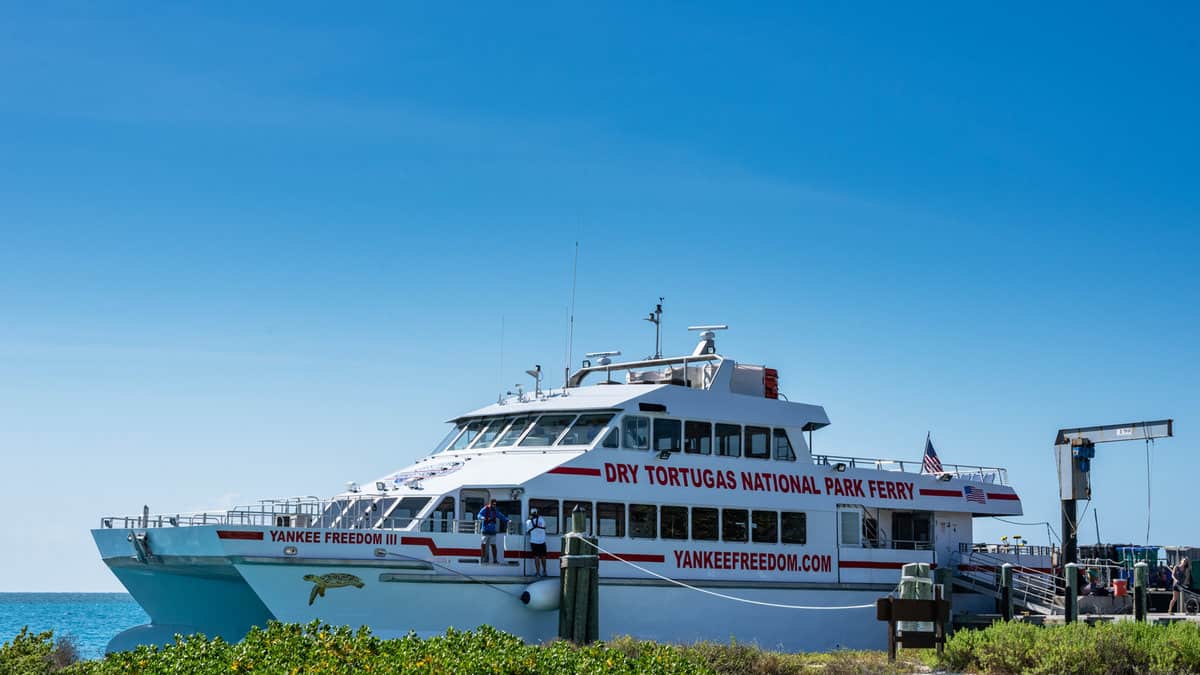
The Yankee Freedom III is the official ferry of Dry Tortugas National Park. It departs daily from Key West and takes about 2.5 hours to reach the park.
The ferry provides breakfast, lunch, snorkeling gear, and a guided tour of Fort Jefferson. The ferry operates year-round, except for Christmas Day and during severe weather conditions.
However, the ferry has a limited capacity, and reservations are required in advance. A ticket costs $200 for adults and $125 for children 16 and under.
If you want to camp at the park, you must pay an additional $20 per person and bring your camping equipment. You can also bring your kayak, subject to availability and restrictions.
By Seaplane
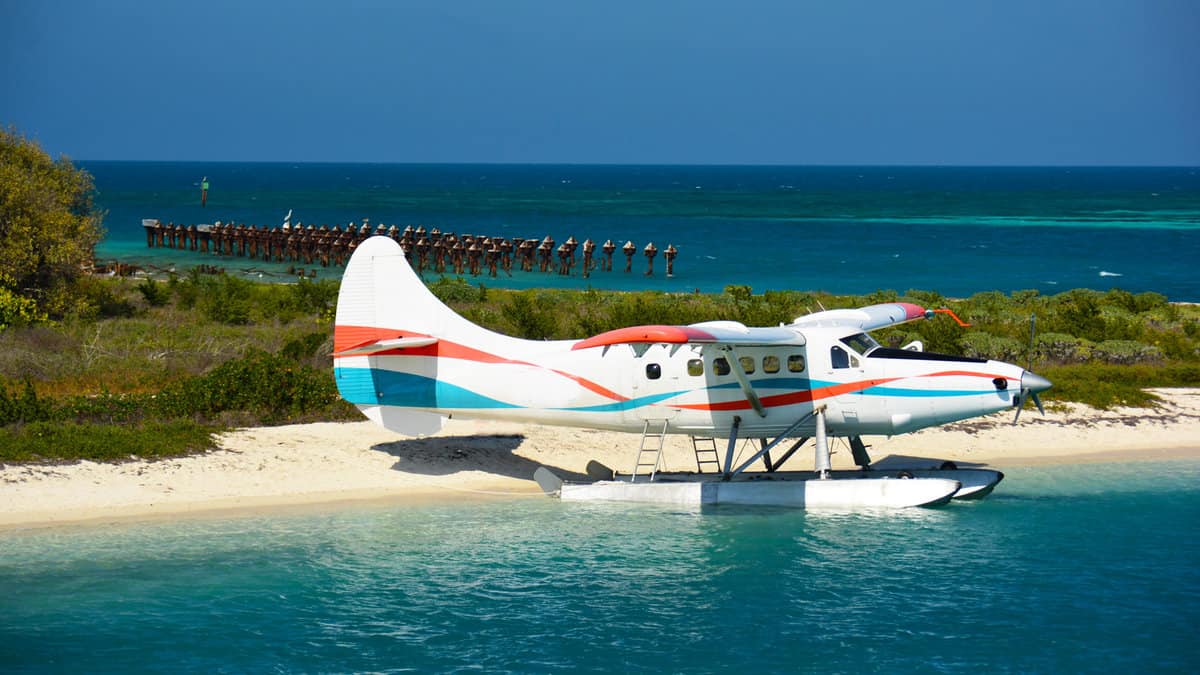
There are two ways to access Dry Tortugas National Park by air: Key West Seaplane Adventures and Key West Seaplanes.
Key West Seaplane Adventures offers seaplane tours to Fort Jefferson and the park daily, with morning, afternoon, and full-day options.
Key West Seaplanes offers private charter flights to the park and local and custom tours. Both companies operate from Key West International Airport.
By Private Boat
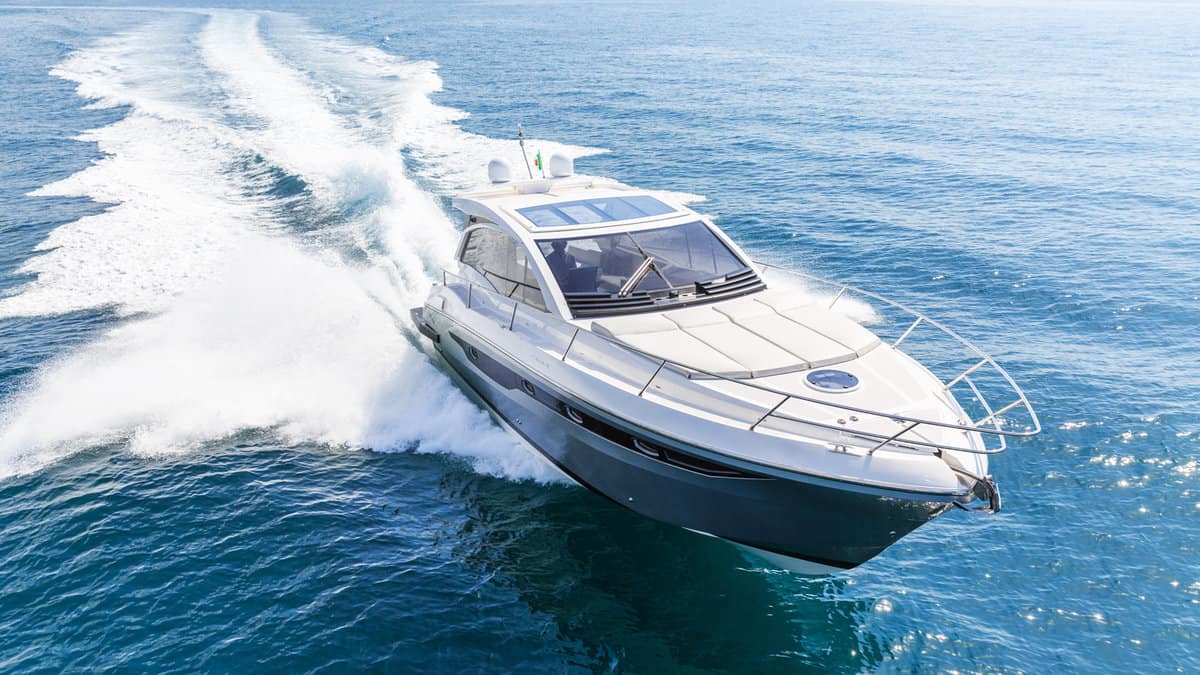
Visitors can also access the park by their own boat or charter boat. However, they need to obtain a permit from the park ranger station before anchoring or docking at the park. The permit is free and valid for 14 days.
Visitors who arrive by private boat are responsible for their own safety, navigation, and supplies. You also need to follow the park regulations and respect marine resources.
Exploring the Underwater Ecosystem
Dry Tortugas National Park has a remarkable underwater ecosystem that covers over 99% of the park. The clear blue waters around the park are home to diverse marine life, including colorful fish, sea turtles, and corals.
Snorkeling and diving are the best ways to explore this underwater paradise. One of the best spots for snorkeling is Garden Key, where you can find coral heads and a variety of fish.
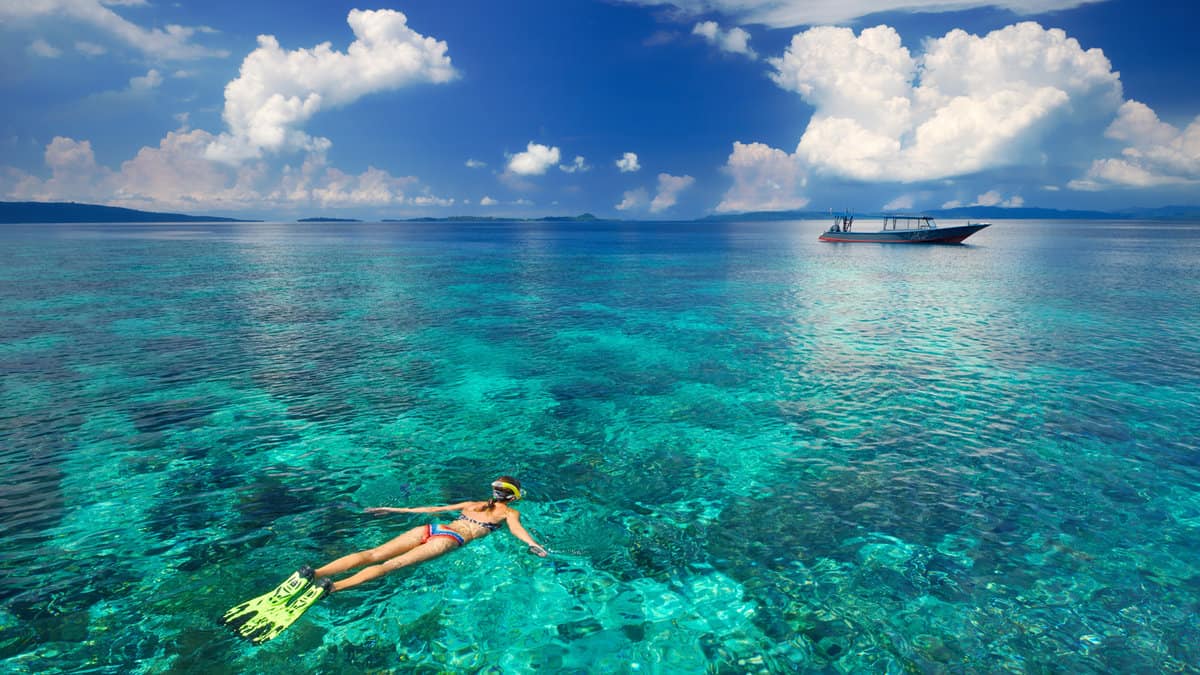
Snorkelers can also spot sea turtles and other sea life around the Key. For diving, the coral reefs around the park are a must-visit. The reefs are home to many corals and marine life, including nurse sharks and snapper groupers.
The park's waters are also famous for bioluminescence, a natural phenomenon where certain marine organisms produce light.
To experience this awe-inspiring sight, visiting the park during the summer months when the water is warmer is best. Ideal spots for viewing bioluminescence include the waters around Loggerhead Key and the park's backcountry.
Camp Under the Stars
The park offers a primitive campground on Garden Key, a short distance from the public dock. You must bring all supplies, including fresh water, fuel, ice, and food, as no facilities are available on the island.
All trash and garbage must be carried out upon departure. Camping at Garden Key is an excellent way to take advantage of all that the night skies in the Dry Tortugas have to offer.
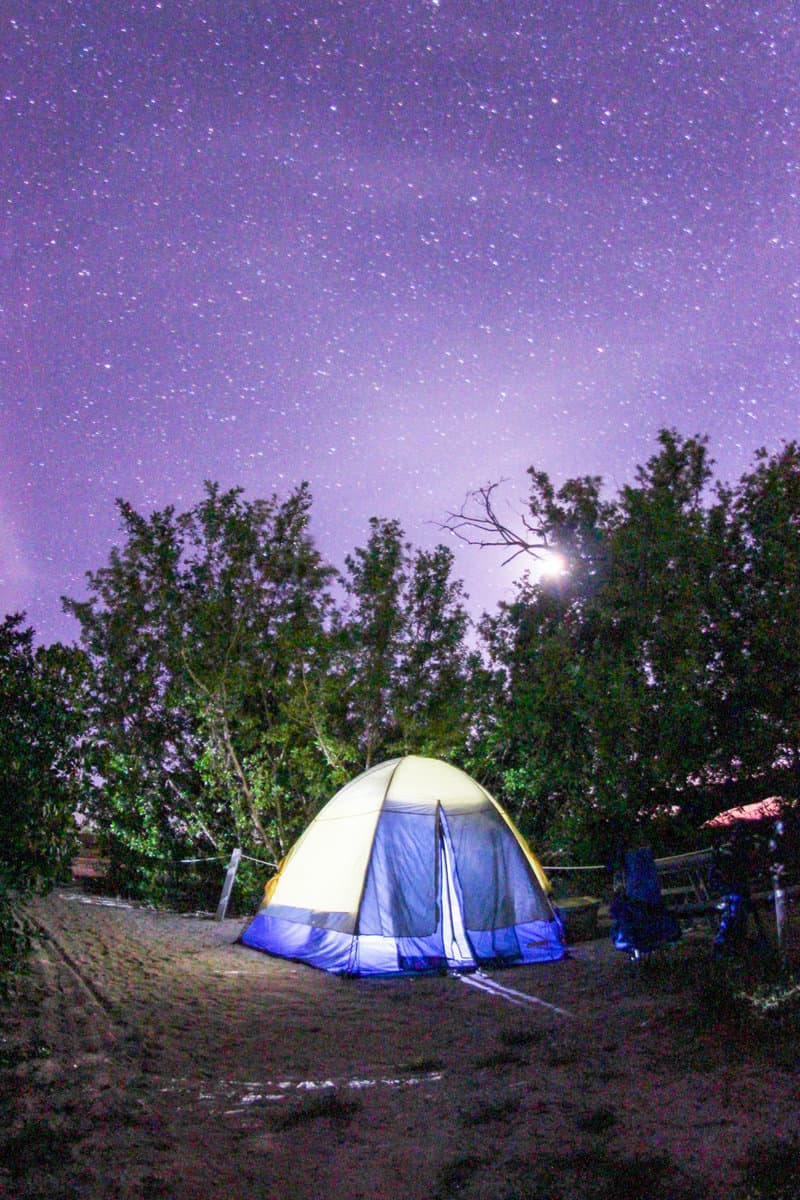
You can enjoy a clear view of the stars and the Milky Way galaxy. The park also offers a unique opportunity to witness bioluminescence in the waters around the island.
Before you go camping, make sure to check the weather conditions. The park is in a tropical climate, so that it can get very hot and humid during the summer months.
However, winter offers more comfortable temperatures. Check the weather forecast on the park's website or by calling the park's visitor center. You must make reservations in advance to camp at Dry Tortugas National Park.
The park only allows a limited number of campers per night, so making a reservation as early as possible is essential.
Wildlife and Bird Watching
Dry Tortugas National Park is home to diverse wildlife, making it a popular destination for wildlife and bird-watching enthusiasts.
With its location in the Gulf of Mexico, the park is a prime spot for spotting various marine life, including dolphins, sea turtles, and colorful tropical reef fish.
If you're interested in bird watching, Dry Tortugas National Park is a world-class destination, especially during spring migration.
The park is home to over 300 species of birds, including sooty terns and brown noddy terns. Bush Key, located just off the park's coast, is a popular spot for bird watching, as it is home to a large colony of sooty terns.
For those interested in land-based wildlife viewing, the nearby National Key Deer Refuge is home to the endangered Key Deer.
These tiny deer, a subspecies of the white-tailed deer only found in the Florida Keys, often graze in the grassy areas around the park.
Historical Significance
Dry Tortugas National Park has a rich and fascinating history that dates back to the 16th century when Spanish explorers first discovered the islands.
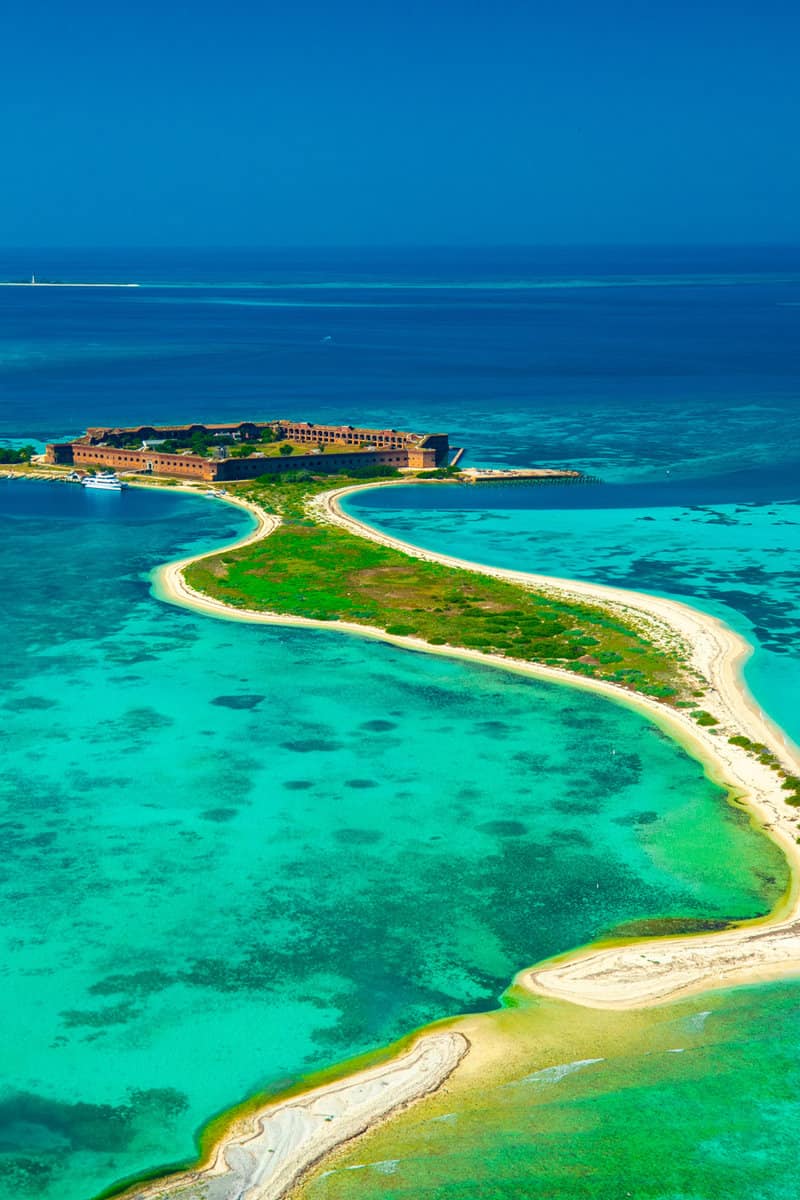
The park is home to Fort Jefferson, a massive 19th-century fort built to protect the United States from foreign invasion.
The fort was constructed between 1846 and 1875 and is the largest all-masonry structure in the Western Hemisphere. During the Civil War, Fort Jefferson served as a military prison.
Here, Dr. Samuel Mudd was imprisoned for medically treating the man who shot President Abraham Lincoln.
"Dry Tortugas" comes from the Spanish word "tortuga," which means turtle.
The islands were named after the large population of sea turtles that lived in the surrounding waters. Ponce de León, the famous Spanish explorer, discovered the islands in 1513 and claimed them for Spain.
Conservation and Research
Dry Tortugas National Park is dedicated to conserving and preserving its unique environment and ecosystems.
The park is home to the Dry Tortugas Research Natural Area (RNA), a 46-square-mile no-take ecological preserve that provides a sanctuary for species affected by fishing and loss of habitat in this region of the Gulf of Mexico.
The RNA was implemented in 2007 to minimize the effects of human activities on marine resources and to enhance the productivity and sustainability of fish populations.
The park also collaborates with the Florida Keys National Marine Sanctuary and other partners to research the park's geology, environment, and culture.
This research helps inform management decisions and ensures the long-term sustainability of the park's resources. The park's commitment to conservation and research also extends to its night skies.
The park is part of the Lightscape/Night Sky program, which aims to preserve natural darkness and reduce light pollution in national parks.
Starry night skies and natural darkness are essential components of national parks, which hold some of the last remaining harbors of darkness and provide an excellent opportunity for the public to experience this endangered resource.
The best way to support the park's conservation efforts is to follow Leave No Trace principles and respect the park's rules and regulations.
This includes not disturbing the park's wildlife or natural resources, not littering, or disturbing the park's night skies with artificial light. By doing so, you can help ensure that the park's resources are preserved for future generations to enjoy.
A Quick Recap on Practical Information You Should Know
To fully enjoy the bioluminescence and stargazing experience at Dry Tortugas National Park, you should keep a few practical things in mind.
Location and Weather
As earlier mentioned, Dry Tortugas National Park is a remote location, accessible only by boat or seaplane.
The park's location in the midst of the Gulf of Mexico means that weather conditions can change quickly, so it's important to check the weather forecast before you go.
Permits and Regulations
To visit the park, you will need to purchase a permit. The permit fee includes entrance to the park and access to the fort. If you plan on fishing, you must also obtain a fishing permit.
Remember that the waters around the park are a no-take ecological preserve, so fishing is prohibited in this area.
Moat Wall and Map
One of the best places to experience bioluminescence is the moat wall surrounding Fort Jefferson. The moat wall is a shallow area where the bioluminescent plankton are most visible.
Use the park map provided at the visitor center to find the moat wall.
Restrooms and Rental Gear
There are restrooms available on the island, but there are no showers. If you plan on spending the night, you can rent camping gear from the park.
You can also rent snorkeling gear to explore the coral reefs.
Catching Lobster With A Permit
If you plan on catching lobster, remember that there are regulations to protect the lobster population. You will need a special permit to catch lobster, and there are limits on the number you can catch.
Best Times for Bioluminescence and Stargazing
The best time to experience bioluminescence is during a new moon when the sky is dark. You can also experience bioluminescence during a full moon, but it is less visible.
For stargazing, the best time is during the winter months when the sky is clearest.
Get Ready for an Adventure Beyond Daylight!
As the sun sets on Dry Tortugas National Park, a whole new world illuminates the night. Don't let darkness deter you from experiencing this natural wonderland firsthand.
With proper timing and preparation, you can revel in the park's bioluminescent waters, admire its stellar night skies, and soak up the intriguing history of Fort Jefferson.
Plan your visit during ideal conditions to see the park's luminous best. Check the moon cycle to catch the waters aglow and aim for winter's clear nights for stargazing.
Secure permits early and pack weather-appropriate gear, from snorkeling equipment to telescopes.
As the sun's rays fade, let the magic of nature take over. Gaze in awe at waters that beam as brightly as the Milky Way glittering overhead. Discover for yourself why this national park is truly a gem after dark.
Thinking of other ways to enjoy your time in Florida? Check out:
3 Best Spots to Enjoy Bioluminescence in Florida
Sea Turtle Nesting Season In Florida: Witnessing The Miracle Of Life
Florida National Parks: The Ultimate Guide
